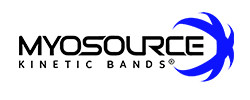Raising the BarThe Myosource Kinetic Bands are a great way for pole vaulting athletes to train to build fast and strong muscles. To pole vault, track and field athletes must build strength from head to toe. The resistance bands training provides an inexpensive and convenient way for pole vaulting athletes to train while they stretch, warm up, and practice. The body moves in all directions when pole vaulting, so the legs, hips, back, abs, shoulders, and arms must be physically trained to endure this vigorous skill. The Myosource Kinetic Bands will help the athlete become more flexible, mobile, and strong in order to reduce injury. |
Pole vault is probably one of the most exciting events to watch because it is one of the most difficult. The athletes need excessive muscle strength, speed, mobility, and flexibility. Without proper strength training, an athlete will not be successful in this track and field event.
How to Pole Vault
It is very important to learn the proper technique and form when pole vaulting. The vaulting pole has to be held the correct way, while footwork and step count must be mastered. Running and carrying the vaulting pole at the same time takes strength and speed. Extending the entire body explosively by push requires full body strength and power. The Myosource Kinetic Bands will help pole vaulting athletes develop these skills by using them while stretching, warming up, and practicing.
Pole Grip:
The vaulting pole is not easy to hold on to or carry. It matters where and how a track and field athlete grips it to pole vault. The hands need to be a shoulder or hips width apart, making sure the soft side of the pole poke is outward from their body. The soft side of the pole should have a mark indicating where it is. When the pole is planted in the box it must be facing upward, towards the hand grip. The Myosource Kinetic Bands develop strength throughout the core and upper body to transfer strength for a great grip.
Marking the Take Off Spot:
The takeoff is where the track and field pole vaulting athlete directs their left foot in order to lift off of the ground. They will hold the pole and extend their arms to a 90 degree angle. The right hand on the pole will be right below the left foot. This spot needs to be marked with chalk or tape. If the pole vaulting athlete is stronger on the left side then everything will be opposite. After the track and field athlete marks their take off spot, they will run 10-12 steps back on the running path and mark their beginning spot.
Run and Carry:
To begin the run, the pole vaulting athlete will put their foot of choice at their beginning mark. Make sure to grip the pole properly and hold it upward at a 45 degree angle, with the end pointed towards the box. The first three steps are supposed to be the longest strides to build up momentum into the sprint. The athlete will begin to drop their pole at approximately their 6th step, leaving it ready to touch the ground when they arrive to the plant spot. The last step is when the pole is driven into the box and the track and field athlete’s arms should be fully extended. This is the point where the top arm is pushed up, straight over the pole vaulting athletes head and the pole will bend for momentum. The track and field athlete will forcefully bring their lead knee up to their chest and the back knee will follow.
Drive your knees just outside your right arm as the pole recoils. Your hips should be above your head as the pole straightens, your legs flexed completely skyward. As you clear the vertical bar, release the pole and allow your body to fall backwards onto the mat.
Swing and Extension:
The proper leg and knee technique and form play a huge role in the swing and extension. To pole vault, track and field athletes have to produce enough momentum so their hips rise above their head when their pole goes from bending to straight. The importance of directional momentum is something pole vaulting athletes do not realize until they get in to the event. Every body part must be going in the correct direction in order for the athlete to be able to clear the bar, let go of the pole, and have their entire body following.



